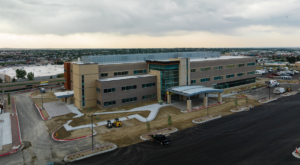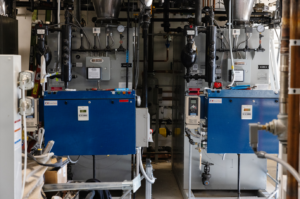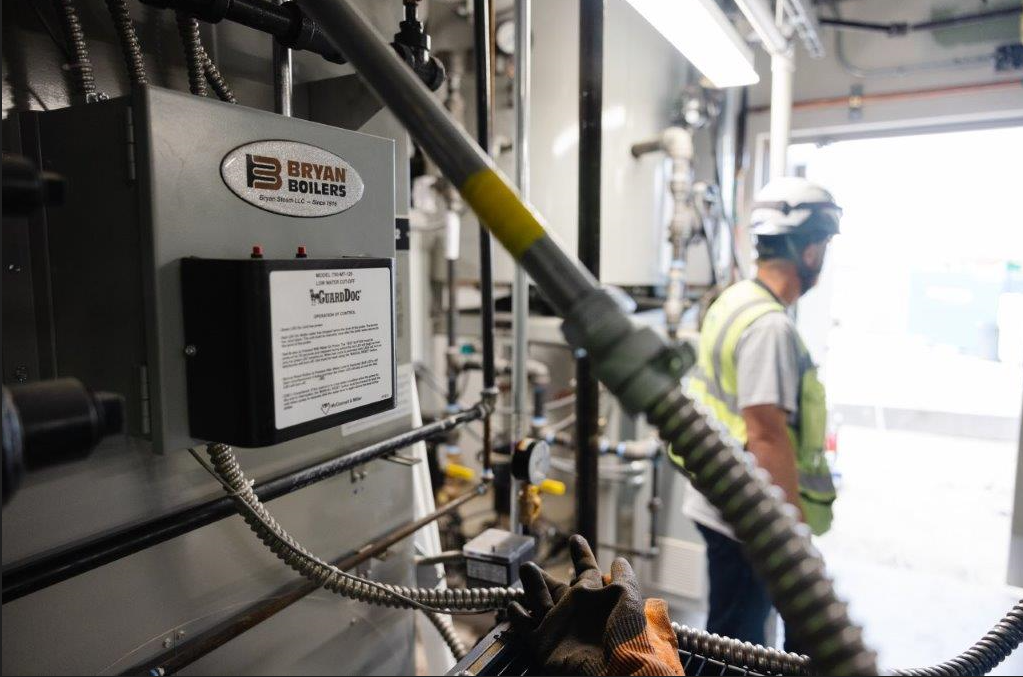by Dan Vastyan
Over the past decade, Colorado Springs has been one of the fastest growing cities in the nation. Construction paused for the pandemic, only to come back with a vengeance in 2021. That year alone, the Pike’s Peak Regional Building Department permitted 4,000 apartment complexes and 5,000 single-family residences.
It’s estimated that the total value of house construction that year – in Colorado Springs alone – totaled $4.3 billion. Inevitably, commercial construction follows residential. More residents require more amenities, whether retail, service or healthcare, among many others.
These days, “Springs” looks like a porcupine thanks to all the tower cranes dotting the horizon.
New to the east side of Colorado Springs is UCHealth’s Eastview Medical Center, with three stories and 125,000 square feet of healthcare space. Its grand opening was October 3, 2023. Patient services include imaging and rehabilitation, lab testing, outpatient surgery, ENT, women’s health, orthopedics, neurology, urology, and more.

One of Colorado Springs’ newest healthcare facilities is the $109 million UC Health Eastview Medical Center, with three stories and 125,000 square feet.
Early planning on the $109 million project began in 2018 but halted with the onset of the pandemic.
“Our initial meetings began in 2021,” said Paige Purnell EIT, project engineer at MTech Mechanical. “This was a plan-spec job, and we were selected for all of the mechanical work, including HVAC, plumbing and the unique steam system that serves the third floor.”
The UCHealth project is representative of MTech’s core capability. The 500-person company’s main office is in Westminster, CO, with satellite locations in Eagle, Loveland, and Colorado Springs. With engineers on staff, they handle design-build and plan-spec projects across the state. Roughly 30 percent of MTech’s work is in the healthcare sector.
“We have special projects and large construction divisions,” said Purnell, who worked on the UCHealth project for two years with Jacob Best P.E., project manager at MTech. “Our core focus is high-rises, hospitals and laboratories. We have the manpower and in-house expertise to handle technical projects, both on the design and field sides of the business.”
Unique demands
The first two stories of the new healthcare facility primarily contain office space. The HVAC systems that serve these areas are relatively straightforward. Boilers and chillers provide heating and cooling capacity to a variety of air handlers throughout the building.
The third floor is where things get more interesting. This area is occupied by six operating rooms, where humidity and pressure are carefully controlled.
“Operating rooms are positive pressure environments,” explained Purnell. “When the door to an OR is opened, air can only move out, not in, avoiding contamination. This is accomplished by providing supply air from a dedicated rooftop unit to VAV boxes. Each VAV box serves single OR, which is also equipped with a return terminal unit. Between the two, we can manipulate the supply and return air to ensure that the room is always pressurized. Positive pressure within operating rooms is maintained at .02” W.C., while the sterilization department is maintained at .01” W.C.”
The rooftop unit for the third floor serves a purpose beyond supplying heated or cooled air, however. Inside the unit are large humidification systems that supply steam to the airstream to maintain proper humidity. The system is designed to provide 79 percent relative humidity to the OR department, pre- and post-anesthesia care unit, and sterile processing department. These areas are served by HEPA filters.
Maintaining proper humidity in an OR is critical, but the steam system serving the third floor satisfies another need for sterile environments.
Dual-purpose steam

Steam for the hospital’s sterilizers and humidification system is generated by two 1,610 MBH Bryan AB Series boilers.
The third floor of UCHealth’s Eastview Medical Center includes the building’s sterile processing department.
Here, medical center staff use six, owner-supplied Steris steam sterilizers and one cart wash station to clean surgical equipment. These specialized pieces of equipment look like a cross between a high-tech walk-in cooler and a bank vault. Also referred to as an autoclave, these sterilizers receive steam from a boiler and use it to heat surgical instruments to 270°F or more. Much like the sterilizers, the cart wash unit accomplishes the same task, but is built in such a way that an entire OR cart can be rolled into the unit.
Steam for the sterilizers and humidification is generated by two, 1,610 MBH Bryan AB Series boilers located in the ground-floor mechanical room.
“MTech has a longstanding relationship with Blackmore & Glunt, Inc.,” said Purnell. “As a manufacturer’s rep firm, they’re involved with many of our waterside projects. On this design, they helped us select the boilers and accessories per the spec and design documents.”
The Bryan steam boilers at UC Health operate in a processing capacity. Unlike a conventional steam heating application, steam from the two large boilers is rejected to the atmosphere, instead of cooling in pipes and radiation, only to return to the boiler as condensate.
“There is certainly some condensate returning to the boilers, because the steam system is in constant operation regardless of the demand,” said Purnell. “With that said, this system requires more make-up water than a conventional steam heating system would.”
With a large makeup water demand, care was taken to ensure the quality of supply water to the boilers. Blackmore & Glunt, Inc supplied a packaged Bryan deaerator and feed system.
“The compact dimensions of these boilers, and that of the feed system and deaerator, were important on this project,” said Eugene Mitchell, sales manager for Blackmore & Glunt, Rockies. “Space was at a premium in the mechanical room.”
Design and coordination

MTech i sa 500-person mechanical company based in Westminster, CO, with satellite locations in Eagle, Loveland, and Colorado Springs. Roughly 30 percent of MTech’s work is in the healthcare sector.
Limited mechanical space was the biggest challenge on the project. The mechanical room houses four boilers in all, along with a great deal of other equipment.
“Long before this project physically began, Jacob and I worked closely with Mitchell and the engineer of record to ensure that the mechanical room design accounted for proper equipment clearances,” explained Purnell. “Actually putting it together felt like assembling a giant jigsaw puzzle. I spent a lot of time coordinating with the GC, the design team and the field crew. Everything fit, but only because everyone was on the same page and the design was carefully followed.”
In July, Mitchell joined MTech onsite for factory start-up of the steam boilers.
“Steam systems are unique,” said Purnell. “They have higher operating temperatures than water boilers, and the systems are more complicated than conventional hydronic systems. In this case, we were also dealing with the sterilization equipment, which was owner-supplied.”
MTech staffed the jobsite with 20 to 30 employees for the duration of the 20-month project.
“Our patients in this fast-growing area deserve convenient access to the very best medical care,” said Dr. Laura Pomerenke, a breast surgeon at UCHealth Memorial Hospital while speaking to Fox 21 News of southern Colorado. “UC Health is always growing and changing to advance our health care offerings, and this is another example of our commitment to all of the Pikes Peak region.”
# # #
